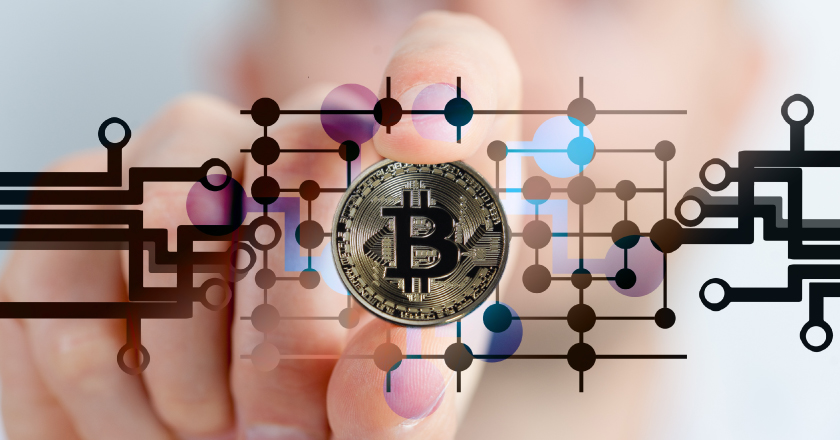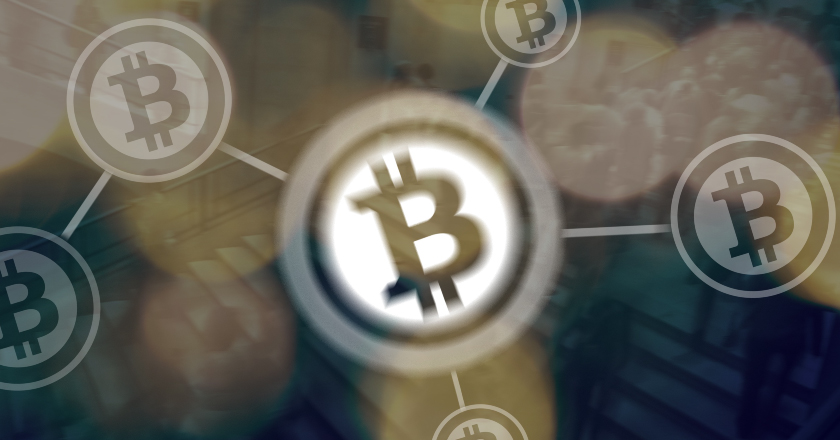Recently, we can witness some debates about the controversy of cryptocurrencies, which are, however, gaining popularity worldwide since they were first conceived. Every day, more and more companies and businesses accept payments in Bitcoins; companies such as Dell, PayPal, Reddit and even Microsoft have adopted this payment method lately. This situation obliges everyone who does not know about cryptocurrencies to get informed about them. There is a wide variety of resources for this purpose, due to the urgent need to keep up to date. Our intention is to explain and analyse the Block Chain Protocol and the rising environment that is currently developing around it.
BlockChain: The Renaissance of the Money

TCP/IP and the Block Chain
Vint Cerf and Robert Kahn had a brainwave back in 1974 and 1975; they invented something which was an extraordinary breakthrough: the TCP/IP Internet network protocol.
It works in the same way as we expect some fixed or standard responses to our statements in our daily communication. Take, for example, that someone says ‘Have a nice day’, that person would expect a ‘You too’ answer, although there are no strict rules for this. Thus, TCP/IP protocol was conceived to allow any computer to be connected and communicate with the ARPANET. The project grew from that moment, moving from the ARPANET to provide connection amongst computers, achieving eventually what we all know nowadays as the Internet of Everything.
Although the IP and TCP technologies have not changed as much. The IP address works currently in the same way as it has always functioned, still serving as the identification of any tablet, computer or smartphone on the Internet. Besides, the TCP technology separates the packages of data into segments so that they can be submitted. Both the IP and TCP work together in order to improve the probability of data packages delivery.
Tim Berners-Lee was influenced by these technologies and later, he created the Hyper Text Transfer Protocol, although we usually use the acronym HTTP. It developed into the way of communication among Web Servers. Nowadays, we have a variety of protocols available to work within the network, such as DNS and ARP. A wide range of devices and different technologies have evolved from these creations; search engines, websites, email services and Internet Services as SaaS, IaaS or PaaS serve as examples of the development into digital economy. The Block Chain protocol is producing the same change and innovation as TCP/IP caused back in their days. Some people even state that the case of Block Chain is comparable and as remarkable as the origin of the Internet.
How the functioning of Bitcoin works? These networks are decentralised. Their job is to verify and validate every transaction that the members of the network have carried out in order to guarantee that all transactions have been made between individual accounts within the network and also to ensure that no double-spending has taken place.
There are some members in the network who are in charge of verifying and validating the transactions are referred as miners. They carry out their tasks by means of specialised software which is combined with the function of processing data with computers so as to check out transactions. Although the miners’ job may seem easy, processing data for this purpose requires powerful computers and bandwidth and a high consume of electricity; purpose for which miners use their own resources and they need to be paid off.
The miners create blocks of transactions every few minutes. These blocks of transactions are organised with files containing all the information about the transactions that have been carried out in the in the network during the previous minutes. The most important concept at this point is to verify that every transaction has taken place only between two individual accounts so as to guarantee that no double-spending has occurred.
Since, as it has been mentioned before, miners use their own resources, in order to pay off their endeavours, they receive Bitcoins. However, there is a finite number of Bitcoins that can ever exist: 21 million, no more. Due to the fact that the reward is limited, that is why these individuals are called «miners»; they work with their powerful computers to get their reward out of the limited currency available.
The term chain refers to the way in which blocks are grouped. Each block of transactions is tied to the previous one in time; that is why the result of the grouped transactions is called Block Chain. Every part of this process is ruled by the Block Chain protocol, an algorithm responsible for the creation of this cryptocurrency: the Bitcoin.
There lies the difference between the TCP/IP protocol which was explained above and the Block Chain protocol, being the first based on communication and the second on value-exchange protocol.
Bitcoin, Ethereum, Ripple, Litecoin… doesn´t matter, Blockchain rules
Apart from Bitcoins, created by Satoshi Nakamoto, some more cryptocurrencies can be found in the market. However, the Block Chain protocol and the processing structure to pursue the objectives are still the same, without taking into account the particular currency and the deflation concerns.
In the same way as the TCP/IP protocol created business opportunities since it was an absolute breakthrough in communication between networks, the Block Chain protocol has provided chances for businesses to produce value-added chains. Thanks to the transaction network, new value concepts are being introduced in the markets.

Micropayments
Nowadays, people can use payment systems which were created in the 50’s; although all transactions have a fixed minimum sum of money to be carried out. This means that people cannot send small amounts of money, or at least they could not do it before, since there are some companies which have created options regarding small payments for the first time. It may seem odd that the situation has not changed in these last 60 years but there is a reason for it: the income from transactions. The figures are clarifying: the average of transfers in 2013 was at 8.9% and resulted in $48 billion income.
In the same line that TCP/IP opened a new way of information transmission, the Block Chain protocol allows the instantaneous transfer of value, without taking into account the size of it. ChangeCoin is a company which is taking advantage of this situation.
With its system of micropayments, any person can pay nominal fees for contents they are interested in without being obliged to subscribe to have access to a wide variety of content that is not appealing to them. This system can be applied to articles, reports or TV channels.
In fact, it would be a great solution for customers who do not want to buy subscriptions for a high number of TV channels they would not watch, but only for 5 channels which are of true interest for them. A good option as well could be to pay the exact amount of data consumption that consumers use when connected to WiFi hotspots, and this could be carried out through micropayment software and a pre-allocated connectivity budget.
Another innovation that ChangeCoin has introduced is ChangeTip, which allows users or readers of webpages or blogs to give a small amount of money as a tip if they liked the content, replacing this way the well-known “likes”, and changing the prospective of the business model of content creation.
Blockchain API’s
There are some companies, CHAIN, for instance, that let developers build Application Programming Interfaces (also known as APIs) on the Block Chain Protocol with the following purposes:
- The allocation of digital resources; for example energy, storage, bandwidth or computation both to the services that need them and the connected devices.
- The access to virtual reality system such as Oculus Rift, since currently everything is moving to the virtual world, developers are also searching for ways to design APIs and implement them in online transactions.
- Tailored micropayments, designing APIs differently according to the kind of transactions.
Programmable Money & Smart Contracts
Smart contracts can be defined as programs that codify conditions and outcomes regarding transactions. It is an innovation that has changed the way transactions are conceived. There is the option of verifying that, once a transaction has been carried out, the supplier has already sent the product or given the service. The payment will only be transferred to the supplier’s account once the verification process is completed. There are predetermined conditions in these kinds of programs, as it is mentioned before, and they guarantee a reliable service on the spot almost at zero marginal cost. Codius is one of the companies that is advancing in this field and taking advantage of the situation, presenting an ideal environment for Smart Contracts.
Not only do these programs develop in the field of financial transactions, but smart contracts are also spreading into the Legal System. Empowered Law is one of the examples of companies that are using the ledger of transactions provided by Block Chain to offer Multisignature accounts for aspects such as asset protection, dispute resolution or corporate governance. As an example, the process of transferring properties such as houses with the same transparency and low cost as Bitcoin payments; this procedure is called ‘Colored Coins’.
Discover more about BSC

Smart Property & Digital Assets: the new paradigms
We can talk then about ‘Digital Assets’. Digital Assets are the ones whose ownership has a digital record, Bitcoins amongst them. However, the Block Chain is an asset registry which is available and decentralised, so it can also register ownership and be used to transfer any other digital asset apart from Bitcoins. Thus, custodians would not be needed in the payments of coupons by means of digital bonds, for example, redeeming the principal to the address holding this digital bond.
This concept has developed in what we call Smart Properties. They are properties with access to the Block Chain and a series of actions can be carried out by taking into account the information contained in the Block Chain registry. Therefore, we can conclude that the Block Chain can control smart property.
For instance, let’s think in a car whose ownership in included in the Block Chain in the way of a digital asset, so, the physical vehicle is connected to the Internet and is able to read the Block Chain. As a result, it can monitor the situation of the digital asset which represents it. When a transfer is carried out from one address to another, the physical car is able to consult its situation and take actions if necessary, for example, changing its owner. It is how we conceive the automation of the Internet of Things.
What should we pay attention to in 2018?
There are two important services that are developing currently: Ethereum and the MIST browser. Ethereum combines a crypto ledger and a complete programming language called Turing. Turing can simulate any other computer language apart from its own. Their intention is creating a browser that becomes a very useful tool for non-expert users to take advantage of the network.
- Different Block Chains creation: several developers are trying to design different Block Chains in order not to depend on a single one. Here is where parallel Block Chains and Side Chains appear to provide compensations and adjustability by means of using alternative and independent Block Chains, resulting in innovation.
- The Philippines: this country is trying to integrate its currency, the Peso, into the Block Chain. In the same line as Africa advanced in telecommunications and moved to wireless systems, it is going to be a very revolutionary situation. Different Block Chains creation.
We can consider the words of Don Tapscott, who is a remarkable authority on technology and innovation and a very influential person in LinkedIn. He acknowledged that he was mistaken, three years ago, in 2014: “Bitcoin… I used to think it would never fly. Now I think not only will it fly as a currency, but the underlying Block Chain technology of crypto currencies is a core part of the next generation of the internet that is radically going to transform not just commerce and the nature of the corporation, but many of our institutions in society and everyone needs to pay attention to this.”
As a conclusion, we can summarise that the attitude of resistance to change would be wrong, especially when it comes to improving the present and introducing useful knowledge and services in our lives.




